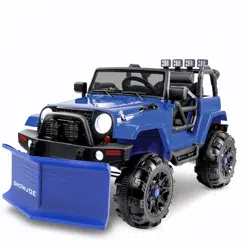Loading ...
Loading ...

3
• Risk of short circuit – A battery pack will short circuit if
a metal object makes a connection between the positive
and negative contacts on the battery pack. Do not place a
battery pack near anything that may cause a short circuit,
such as paperclips, coins, keys, screws, nails and other
metallic objects. A short-circuited battery pack poses a
risk of fire and severe personal injury.
• Adults only – The battery should be handled and charged
by adults only. Never allow children access to the battery.
• Store your battery pack and charger in a cool, dry
place – Ideally, store the battery pack at 59°F (15°C) and
charged to at least 40%. Do not store the battery pack or
charger where temperatures may exceed 105ºF (40.5ºC),
such as in direct sunlight or inside a vehicle, or where
temperatures may drop below 41°F (5°C).
NOTE: Prevent the battery pack from freezing. Battery
packs that were stored below 32°F (0°C) for more than 60
minutes must be discarded.
• Charge before use – The battery pack supplied with your
ride-on SUV is only partially charged. The battery pack
has to be fully charged before using the product for the
first time.
• Battery Aging – Lithium-ion batteries are subject to a
natural aging process. The battery pack must be replaced
at the latest when its capacity falls to just 80% of its
capacity when new. Weakened cells in an aged battery
pack are no longer capable of meeting the high power
requirements needed for the proper operation of your ride-
on SUV, and therefore pose a safety risk.
• Do not exhaustively discharge battery packs –
A complete discharge will damage the battery cells. The
most common cause of exhaustive discharge is lengthy
storage. Stop working as soon as the performance of the
battery falls noticeably or the electronic protection system
triggers. For optimum battery performance, charge the
battery pack frequently. Place the battery pack in storage
only after it has been fully charged.
• Do not overload battery packs – Protect the product and
batteries from overloading. Overloads will quickly result in
overheating and cell damage inside the battery housing
even if it is not apparent externally. For safety reasons,
the integrated protective cutoff will activate to switch off
the equipment. After regular use, allow the battery pack
to cool to room temperature before inserting it into the
charger to recharge.
IMPORTANT! Do not attempt to turn on the product if the
protective cut-off has been activated. This may damage
the battery pack.
• Outlet voltage – Please check the data marked on the
rating plate of the battery charger. Be sure to connect the
battery charger to a power supply with the voltage marked
on the rating plate. Never connect it to a different mains
voltage.
• Charger use – Do not use the supplied battery charger to
charge other types of battery packs or tools.
• Do not overcharge battery packs – Do not exceed
the maximum charging times. Frequently overcharging
the battery pack will result in cell damage. Do not leave
batteries in the charger for days on end.
• Battery pack abnormalities – Do not use batteries that
have suffered swelling or deformation or those that exhibit
other atypical symptoms (gassing, hissing, cracking, etc.).
• Electrostatic discharge – When handling batteries, be
wary of electrostatic charge. Electrostatic discharges can
damage the electronic protection system and the battery
cells. To avoid electrostatic discharges, never touch the
battery terminals.
• Battery Installation – Ensure the battery pack is properly
seated in the battery compartment. If not properly
installed, the battery may some how fly out of the battery
compartment, out the hood, over the windshield and hit
the child in the unlikely event of a rollover.
Loading ...
Loading ...
Loading ...
